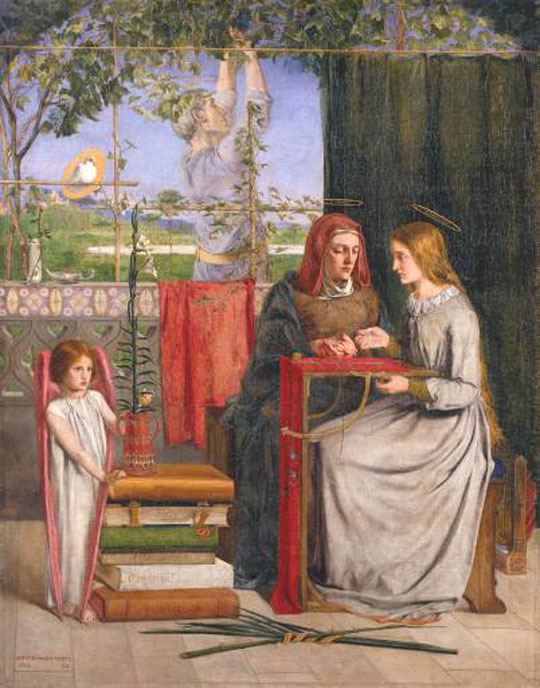“Pre-Raphaelite painter and poet. His father, Gabriel Rossetti, was an Italian refugee,
and Professor of Italian at King’s College, where Rossetti first studied 1837-42.
Entered RA Schools in 1845. Pupil of Ford Madox Brown for a few months in 1848, after
which he shared a studio with Holman Hunt. Together with Hunt and Millais, Rossetti
played a leading role in the formulation of the Pre-Raphaelite Brotherhood 1848-49.
Toured France with Hunt in 1849. In 1850 he met Elizabeth Siddal, who became his
favorite model, his mistress, and later, in 1860, his wife. Although Rossetti was
the driving force behind the PRB, he only contributed two oil paintings to the first
phase of the movement. Because of the furore aroused by the paintings of the PRB,
he never exhibited his pictures in public again, preferring to sell through agents,
such as the disputable C. A. Howell, or direct to collectors. From this period until
about 1864 he preferred to work in watercolour, although Hardie writes “neither oil
nor watercolour were pliant and malleable materials in his hands. He was wrestling
with refractory substances, and perhaps for that very reason his work has the intensity
and inner glow so often lacking in the painter who attains a surface of superficial
ease”. He always considered himself primarily a poet (as was his sister Christina).
The subjects of his works in the 1850s were mostly taken from Dante or Morte d’Arthur,
and Elizabeth Siddal appears in practically all of them. In 1857-58 he worked on
the Oxford Union frescoes with Burne-Jones and William Morris, both of whom became
his disciples, thus generating the second phase of the Pre-Raphaelite movement. In
1862, after the tragic death of his wife from an overdose of laudanum, he moved to
Tudor House, 16 Cheyne Walk. He turned back to oil painting, concentrating on allegorical
female portraits, or groups of females. Although he used several models, the same
facial type, languid and sensual features was present in all of them. His most famous
model, and the one most associated with the Rossetti image, was Jane Morris. Rossetti
began to suffer mental disturbance, and became increasingly dependent on chloral.
The quality of his work declined, but he was still successful enough to employ studio
assistants. Burne-Jones and Morris both thought that Rossetti’s best work was done
before 1860, and many modern critics agree with this. But the influence of his ideas
and his personality, transmitted through Burne-Jones and his many followers, remained
a potent feature of English painting even into the early 20th century. His studio
sale was held at Christie’s on 12 May 1883.”
(Biographical source: Wood, Christopher. The Dictionary of Victorian Painters.)





